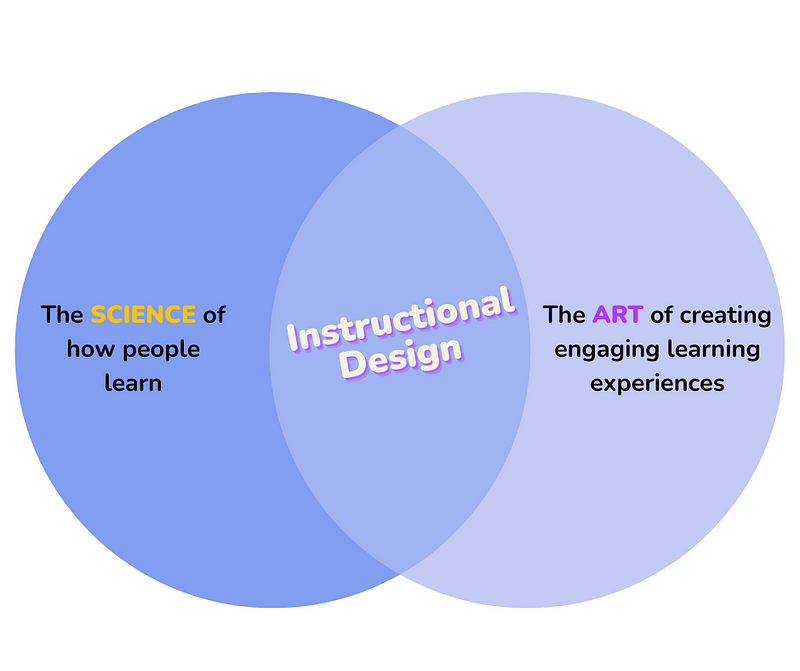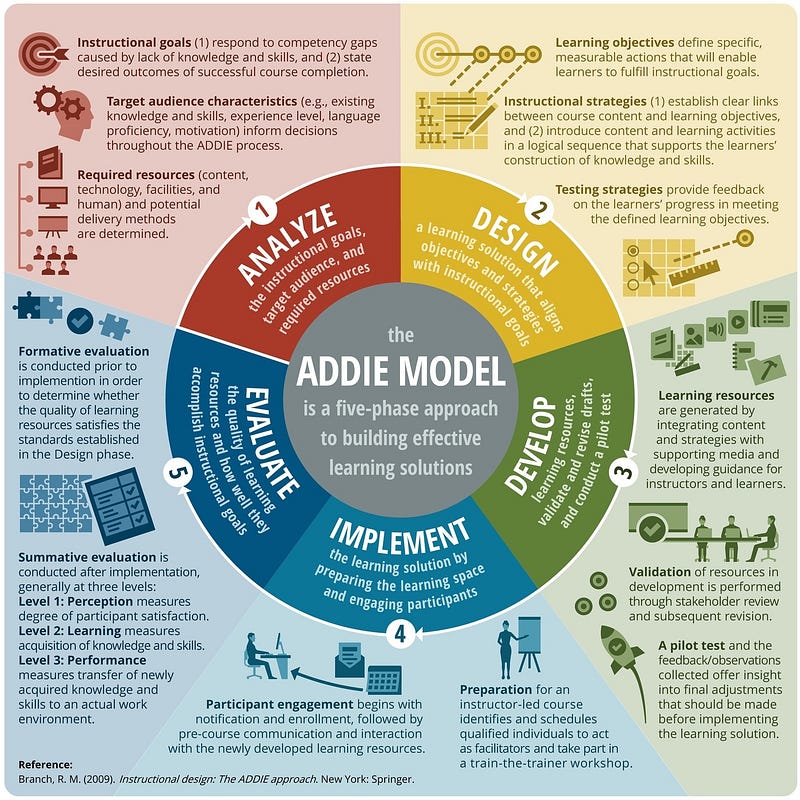3 Frameworks to Design Effective and Engaging Learning

3 Frameworks to Design Effective and Engaging Learning
A Peak into The World of Instructional Design
During World War II, the field of instructional design emerged out of necessity when soldiers needed extensive training on various tasks.
What‘s Instructional Design?
Instructional design is the practice of creating engaging learning experiences through which people can acquire and apply new skills.
The field can be seen as a combination of other disciplines including behavioural science, military training practices, and education.
Instructional design is the practice of creating engaging learning experiences through which people can acquire and apply new skills

This article aims to provide an overview of the most common design processes used in the field.
Disclaimer: I am not a professional instructional designer, the post narrates my journey into the world of instructional design, this is just how I enjoy learning (researching, then writing and creating graphics).
The ADDIE Model
ADDIE was developed for the armed forces in the 70s but is probably still the most common design model used.
Most other models are adaptions of this model.
ADDIE consists of 5 phases — Analysis, Design, Development, Implementation, and Evaluation, where the outcome of each step feeds into the next step.

Weaknesses of ADDIE
Although it is the most popular model, the reason there are now alternatives is there are some weaknesses to it, which include:
- Unrealistic amount of required upfront work — most teams end up doing very little
- Can inhibit creativity (particularly in the midst) through too strict a process
- Not enough room for iteration (lack of clear ways of dealing with new ideas or identified errors during the process)
- Post-tests often do not provide enough useful information to aid in the improvement of the learning design
Many of ADDIE’s weaknesses seem to revolve around a central theme, that is, ADDIE is too rigid to be optimal for learning design in our modern, fast-paced and always-changing world.
Many of ADDIE’s weaknesses seem to revolve around a central theme, that is, ADDIE is too rigid to be optimal for learning design in our modern, fast-paced and always-changing world.
To address this, many modern instructional designers usually implement all of the stages at once and make adjustments throughout the project.
SAM — the ‘Prototyping’ Model
SAM stands for Successive Approximation Model.
It is a simplified ADDIE model, focusing on rapid prototyping and the testing of multiple solutions.
Startup entrepreneurs will know of the ‘Lean Startup’ and be familiar with terms like ‘Minimum Viable Product’.
SAM brings these kinds of methodologies into the world of instructional design —the model is all about fast prototyping and iteration.
…and you get to garner feedback much earlier in the design process.

Action Mapping
This is a framework that helps instructional designers design business training.
Action Mapping is popular because it brings business goals to the forefront.

Instead of focusing on what people need to “know”, it focused on what they need to “do” within their business, in order to achieve business goals.
Cathy Moore — the inventor of the technique — puts it this way:
“Instead, we should see ourselves as analyzing problems and, when appropriate, designing experiences that solve those problems.”
“Instead, we should see ourselves as analyzing problems and, when appropriate, designing experiences that solve those problems.” — Cathy Moore, training designer and inventor of Action Mapping

If you’d like to know more about this technique — visit Cathy’s blog where she goes through it as well as various examples, in much more detail.
Modern instructional designers are familiar with all of these models.
For more information and examples on how to put them into practice, I’d recommend Devlin Peck’s Blog and YouTube channel — Devlin is a well-known Instructional Designer, and content creator in the Instructional Design space.
Subscribe to my list to receive occasional emails about whatever I am digging into and feel will be valuable to you creatively :)